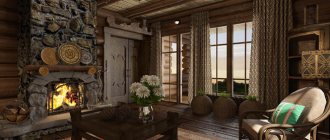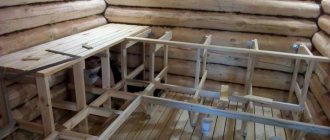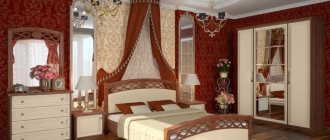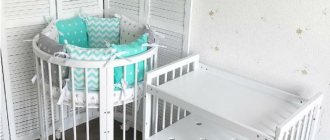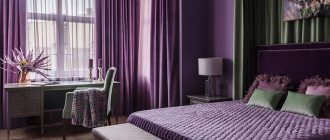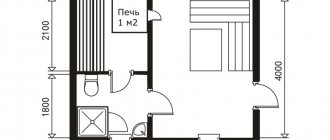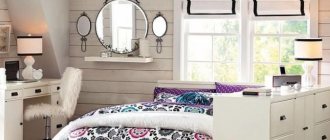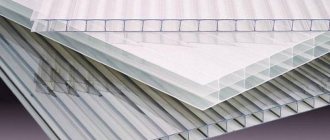In December 1956, the Minister of Coal Industry of the Ukrainian SSR Zasyadko himself came to the Zamkovskaya mine, which was preparing for state acceptance, not far from Kadievka. The mine was ready for operation, and the state selection committee was ready for the signing of the Act and a ceremonial banquet. However, after inspecting the industrial site, the minister went into the washing department of the mine bathhouse. Seeing the blatant wretchedness and ugliness of the decoration and equipment, he categorically forbade the mine to be put into operation until the bathhouse was brought into human form. Just the day before, he returned from Great Britain, where he visited the mine bathhouse of the decaying capitalist world. What he saw shocked him so unpleasantly that at the meeting he posed the question bluntly: “The mine will be put into operation only when its bathhouse looks properly.” In modern conditions, every self-respecting bathhouse owner tries to make his brainchild look the best. Finishing the wash room in the bathhouse is an important and responsible process, so that the finished bathhouse provides a pleasant rest for the eye. Well? We choose materials and technologies.
What material is suitable for a steam room?
There are a lot of finishing materials for interior work. To make it easier for you to choose what kind of finishing will be done for the steam room in the bathhouse, each designer has photos and pictures of ready-made solutions. It is worth remembering that even if you made your own choice, it is better to coordinate it with a specialist, because not all materials are suitable for installation inside the hottest room.
Taking into account the specific operating conditions, the following requirements are imposed on the finishing:
- moisture resistance;
- heat resistance;
- durability;
- hygiene;
- environmental friendliness.
Important! For the interior decoration of the bathhouse, you should choose natural materials.
When the temperature rises, plastic becomes deformed and begins to emit an unpleasant odor, and ordinary tiles crack after heating. Therefore, the use of such finishing is unacceptable in the steam room.
The best option is wood. The finishing structure depends on financial capabilities. For example, lining is cheaper than timber; it is chosen if it is necessary to meet a certain budget. Basically, bathhouse owners prefer deciduous wood. Below is an example of what the interior decoration of a bathhouse might look like, a photo of the classic version.
High-quality wood for interior decoration of a bath Source stroy-block.com.ua
There is an opinion that you should not sheathe the inside with steamed coniferous wood, since it releases resin when the temperature rises. But this statement is controversial, because resin has a beneficial effect on health, cleanses the respiratory tract, and strengthens the heart.
Whether or not to sheathe the interior with coniferous wood is up to you - maybe someone in your household doesn’t like the smell of pine needles or vice versa...
If lining was chosen for cladding the bathhouse, then it must be of high quality. Particular attention must be paid to the external processing of the material - there should be no chips, knots, or cracks on its surface. The lining should not deform: swell when heated or dry out at normal temperatures.
If wood is not suitable for you as a material for interior decoration of a steam room for some reason, you can give preference to heat-resistant tiles; they have proven themselves well under significant temperature changes.
Experts recommend laying the walls of the steam room with terracotta flagstone - this material is resistant to high temperatures and humidity.
Choosing a material for finishing a bath or sauna
If we talk about the most common set of rooms inside a bathhouse or sauna, then this list is usually small:
- hallway and dressing room;
- restroom;
- shower room and/or room with swimming pool;
- steam room
Of course, some rooms may be missing or be multifunctional spaces. For example, one room can combine a locker room, a relaxation area and a segment with a shower stall. The more rooms there are in the bathhouse, the more options and methods for creating finishing can be used to create the design that is most suitable for the microclimate of the room. It is important to create not only reliable protection for surfaces, but also a special atmosphere of rest and relaxation, which is one of the reasons for going to a bathhouse or sauna. So, a bathhouse can have several rooms or just one space, but what remains unchanged is that without a steam room this space loses all meaning. This publication will be devoted to the design of this difficult but very important room.
Considering the special microclimate that prevails in the steam room, the main stage in creating the finishing can be considered the choice of the right material. The facing material must have the following qualities:
- resistance to temperature changes and hot air;
- resistance to high humidity;
- hygiene;
- strength and durability;
- absence of toxic substances released at high temperatures;
- resistance to the formation and spread of fungus;
- excellent aesthetic qualities;
- nice texture.
As a rule, lining is used to finish the surfaces inside the steam room. It is best to choose the following raw materials for this safe and aesthetically attractive material:
- cedar;
- Linden;
- larch.
To cover the surfaces of the dressing room (the room preceding the steam room), you can use pine lining. By combining wood of different shades, you can create some variety in the decoration of a bathhouse or sauna.
Ceiling protection
Before finishing, you should protect the ceiling from hot steam. To do this, use aluminum foil or a construction membrane.
Important ! Do not use foil with mineral wool or polypropylene foam glued on it. When heated, these materials release toxic substances.
Protecting the ceiling in a bathhouse using aluminum foil Source ko.aviarydecor.com
Ceiling decoration in the bathhouse
During operation, the ceiling is exposed to the aggressive effects of hot steam and high humidity. It is important to protect the floors with vapor and heat insulation to prevent damage to the materials. Aluminum foil or a construction membrane is often used for these purposes. They are equally effective at ensuring they are sealed.
Ceiling insulation with foil
For vapor barrier, do not use foil with cotton wool glued on it. It is much thinner and less convenient when carrying out cladding work. Also, do not use foil with polypropylene foam attached. It is toxic when heated, so it is not suitable for use in bath rooms.
Foil rolled mineral wool
Foil insulation
It is important to carefully seal all joints with aluminum tape. If during the process of attaching the material you inadvertently damaged it, immediately seal this place, then you may forget to do this and the vapor barrier will be damaged.
Aluminum tape. Sealing joints
In the steam room you need to lay out a hole for the pipe. It is equipped with a box made of thin stainless steel sheet, which is filled with expanded clay.
Ceiling cutting
The ceiling above the stove is additionally insulated with a steel sheet, which protects the wood from excessive heat.
Steam room ceiling insulation
Video - Recommendations for the height and finishing of ceilings in the bathhouse
Step-by-step instructions for installing lining on the ceiling
Step 1. Slats with a cross-section of 2*4 cm are sewn onto the ceiling with a lathing pitch of 40-45 cm. In the places where the frame is attached, it is necessary to provide gaps for ventilation of at least 10 mm.
Diagram of a wooden frame for lining
Step 2 . The slats are placed horizontally on the walls, the direction is perpendicular to the lining.
Step 3. Wooden panels begin to be attached from one of the walls. The groove of the first plank is directed outward and the tenon of the next one is driven into it. It can be the other way around, there is no fundamental difference.
Installation of wooden lining on the ceiling
On a note! When installing, use pads and a mallet to avoid damaging the material.
Step 4. The planks can be fixed with special clamps; they are attached to the rail with nails or screws. But the simplest and most convenient way is to use a construction stapler. It reliably fixes the lining and significantly reduces installation time.
Ceiling paneling
Scheme of fastening the lining using clamps
Fastening the lining to clamps
Step 5. Gaps from the walls of 2-2.5 cm are left on the sides. This provides additional ventilation and prevents deformation of the finishing material. The gaps are subsequently hidden by the baseboard.
The first and final panels are nailed with nails with a small head. They are hammered in at an angle, the head is completely driven into the wood using a hammer.
Ceiling lined with clapboard
It is important to ensure the verticality of the slats, which is checked after installing each panel using a level. Instead, you can use a simple construction meter. In this case, you measure the distance from the wall to the edge of the installed panels on one side and the other.
If there is a discrepancy in measurements, the lining is carefully tapped to the required level. To do this, use a small piece of the same panel, which is inserted into the groove and a mallet (or hammer).
The panels are also trimmed in the following way: a wooden overlay is fixed, under which a pointed sliver is carefully hammered.
Using lining - rational or not
Definitely yes! Lining made from linden, aspen, cedar, and abashi has become popular due to its properties. It tolerates temperature changes well, high humidity, is aesthetically pleasing, and does not absorb moisture. Cladding made of clapboard has low thermal conductivity - it does not heat up, but transfers heat to the air.
Bath lining is not covered with varnish, antiseptic, or paint; it is used in its natural form.
See also: Catalog of companies that specialize in finishing materials.
Preparing the walls for finishing
When starting to finish the walls, they solve the issue of insulation and waterproofing. Without such measures, the bathhouse will not last long, and healing procedures will be reduced to simple hygienic ones. For insulation, the walls are covered with mineral or basalt wool. The second one is more resistant to high temperatures, so it lasts longer.
Insulation of walls in a steam room with mineral wool Source hvylya.net
Experts consider cork to be the best thermal insulator for bathhouse walls. This agglomerate does not burn, does not rot, and is resistant to fungi and mold.
Dressing room finishing
The dressing room can be built of any size, but usually its dimensions are 2x3 meters. In such a small room it is quite possible to place a table with benches and a hanger. The choice of interior finishing options is quite large.
Typically, a bathhouse built from logs does not need additional covering. The main task in this case is good insulation and treatment of wood with impregnations that protect the wood from negative influences.
If the building still needs interior decoration, then there are quite a lot of options. It should be noted that due to high humidity, the selection of materials for interior decoration must be taken seriously .
Materials suitable for finishing the walls of the dressing room.
- PVC. This inexpensive and practical material is easy to install, and smooth wooden walls do not even require a frame. The choice of colors is wide, allowing you to create a design in any style. But plastic cannot be used on the wall between the dressing room and the steam room , since when heated it can deform and release harmful substances.
- Rubber paint. A new product that is quickly conquering the market. This paint can be applied to any surface. The paint is waterproof, does not peel off or crack.
- A block house that imitates log walls will fit perfectly into the interior of the dressing room , however, it must be installed carefully, especially at the corners, at the junction with windows, doors, and near sockets.
- Lining. The cladding board is positioned vertically to prevent moisture retention. Its thickness must be at least 16 mm. On flat wooden surfaces, the board can be laid without lathing.
Which wood is best to use for cladding the dressing room?
- Oak. Meets all requirements, moisture resistant, strong, durable. It has antiseptic properties and has a positive effect on blood vessels and pressure.
- African abash is distinguished by low heat capacity, hardness, resistance to deformation and good performance properties.
- Canadian cedar is resistant to high humidity, fireproof, and does not deform due to temperature changes. When heated, it releases antibacterial essential oils.
- Linden has great stability of texture and color, does not release resin when heated, absorbs sounds and water, and emits a pleasant relaxing aroma.
- Aspen is impervious to moisture and does not deform. Over time, it may lose its appearance and therefore needs treatment. The aroma of aspen is soothing.
- Larch is durable and therefore difficult to process. Withstands difficult operational properties and is durable. Reduces blood pressure and strengthens the immune system.
- Pine is ideal for finishing a dressing room. It is resistant to rot and fungus, does not crack or deform, and is also durable. Over time, the pine acquires a pleasant reddish tint. It has bactericidal properties and improves immunity.
Floor finishing can be made of wood or ceramic tiles with an anti-slip coating can be used.
Waiting room design options
Lathing - to do or not to do
Craftsmen prefer to install the sheathing and attach the interior trim to it. The popular base size is 50x50, less often they make 70x70. The pitch is not standard and varies depending on the size of the blocks being strengthened.
The sheathing is made of wood, less often of metal. Considering the operating conditions, the metal must be treated with moisture-resistant compounds. The lining or logs are secured with self-tapping screws and nails. They must be copper or brass. The installation of the base is done perpendicular to the sheathing.
Lathing walls in a steam room under clapboard Source seattlehelpers.org
Stages of clapboard finishing
- A beam is fixed along the perimeter of the wall and ceiling . Fastenings should be every 80–100 cm.
- Cut pieces of insulating wool are placed between the wood without compacting.
- The top is covered with a waterproofing agent . The joints are sealed with aluminum tape, paying special attention to the corners.
- Provide ventilation . To do this, fill the distance rail. It will provide a small gap (2–3 cm) through which air will be vented.
- They make separate upholstery for doors and windows.
- They fasten the lining . You need to start from the corner, fixing each part vertically. This position will ensure free flow of water. If a horizontal arrangement of blocks is planned, make sure that the spikes are at the top. This will protect the lock from moisture.
- The lining located in the corners or near the walls is cut to the required size . It is especially important to cut the corner block correctly. It is necessary to accurately calculate the angle of inclination so that the adjacent block is correctly fixed.
Insulating the furnace using a metal sheet Source interistroy.ru
Next, install insulation from the furnace. For this use:
- metal - stainless steel or profiled iron is mounted on the wall behind the stove;
- red brick - placed between the wall and the fire;
- tiles resistant to high temperatures (kaolin);
- mineralite is a heat-resistant board made of cement and special components.
Working with walls in a washroom
Traditionally, when deciding how to decorate a bathhouse sink, they prefer to choose wood, since it meets all the requirements for this room. However, not every type of tree is suitable for these purposes.
It is best to finish the shower in a wooden bath from the following types of wood:
- Abashi is an African type of wood that has a beautiful appearance and texture, practically does not heat up and is very durable.
- Cedar is suitable for lining walls and ceilings in the washing room of a bathhouse, since it does not heat up very much, and it will not release resin, because it is not as hot here as in a steam room. However, such lining is very expensive.
- Larch is a moisture-resistant and durable material. Although it is quite difficult to process, it is very attractive in appearance and smells pleasant.
- Linden - this type of wood is the best among the options for sheathing a bathhouse sink. When exposed to water, the wood does not darken, and also has a subtle aroma that has a positive effect on the body.
Regardless of what you decide to cover the bathhouse sink with, the lining can be positioned in several directions to create a decorative effect (read: “How to cover the inside of a bathhouse - how to choose a material”).
There can be several options for fastening the lining:
- horizontally;
- vertically;
- diagonally;
- in mixed media.
Finishing a sink in a bathhouse with wooden lining begins with attaching a frame consisting of timber (read: “How to attach lining in a bathhouse - rules and installation sequence”). The structural elements are attached perpendicular to the direction of installation of the lining. Moreover, it does not matter whether the horizontal, vertical or diagonal fixation method was chosen. And if you also combine different cladding options, the design of the bathhouse sink will be truly impressive.
Fastening the lining can be done using the following methods:
- using clamps;
- using nails, driving them into the groove at an acute angle, which can be a difficult process for a beginner;
- using self-tapping screws, screwing them all the way through.
Making the floor in the steam room
Not only comfort, but also safety depends on the choice of raw materials for the floor. Moisture on smooth tiles or linoleum leads to falls and injuries. Installation of such materials will turn the floor into a skating rink. In addition, when heated, linoleum emits an unpleasant odor containing substances harmful to health.
The optimal choice of floor for a steam room is wood. It does not require a special coating, and with this design the room will be designed in the same style. It is worth noting that the wooden floor in the bathhouse is not made of oak. This wood becomes stronger when wet, but at the same time its surface begins to slip.
Concrete works well. A floor made of such material will be strong and durable. Tiles are laid on top of it, but the structure of the surface of such a coating is important. It should not be glossy; a pronounced relief is necessary. The floor is laid at a slight slope towards the water drainage.
Laying tiles on the floor in a bath Source seattlehelpers.org
The tiles are laid from the corner, placing crosses between the blocks, tapping with a mounting hammer. After 2-3 days, the seams between the tiles are rubbed down. Wooden grates are placed on top to prevent you from stepping on the cold floor and provide additional safety in case of possible slipping.
And now the shelves
A very important point is the shelves in the bathhouse. Since constant tactile contact is assumed with them, increased requirements are put forward for these elements:
- they should not get very hot ;
- it is better if they cool slowly ;
- must be environmentally friendly ;
- do not slip or be very rough;
- have no external damage ;
- easy to wash.
Again, wood is most suitable for this purpose. Carefully cleaned, without knots or nicks, it has served people in bathhouses and steam rooms for centuries. Shelves should not have sharp corners that could cause injury. They are not made solid, leaving a small distance between the wooden boards.
Setting up a dressing room
The main function of the dressing room is to preserve heat. The temperature in the room is not high, so it is good to use coniferous trees to decorate walls in a traditional style.
Design of the waiting room and rest room “under the tree” Source koon.ru
The interior decoration of the bathhouse made of logs creates an atmosphere of antiquity and ancient fairy tales. A light aroma created by pine, fir, and spruce is appropriate here. The wood of these species resists fungus and mold well. It does not crack after drying and is durable. When heated, fir releases almost no resin.
If hardwood is preferred, experts advise finishing the room with birch. The lining can be laid out not only in even rows, but also in a pattern. It is important that the walls in the room are covered with the same type of wood.
Finishing technology
Preparation is an important stage of finishing, both internal and external. Both during the construction of a bathhouse from scratch, and during repairs, finishing begins with hydro- and vapor barrier. A lumber sheathing is mounted on the wall with a pitch of 50 cm, behind which foil insulation (penofol, polypropylene) is placed. The insulation is attached to the grille, after which the outer cladding is installed, which is installed with a small air gap. Immediately after installing the slatted frame, you need to treat it with a special antiseptic to prevent mold infection.
The exterior finishing of a bathhouse made of bricks/foam blocks also occurs on the basis of a slatted frame, on which imitation timber or lining is installed. The latter option allows you to achieve an accurate imitation of a rounded log. For a wooden bathhouse made of timber or logs, caulking is carried out.
Bathroom and washroom
These rooms do not have very high temperatures, although the humidity is as high as in a steam room. The choice of finishes in the bathroom and washroom is more extensive. Fans of bath procedures recommend using natural raw materials for such rooms - wood or stone. Among wood, pine is the leader - it is an affordable material, however, it darkens with prolonged use.
An example of a washing station design Source profstroiplotnik.ru
Plastic is acceptable since there is no high temperature, and it tolerates humid air well. You can use regular tiles for the shower.
Video description
For interesting ideas for interior decoration of a bathhouse, watch the video:
Decorating a relaxation room in a bathhouse, in addition to traditional wood, can be done:
- glass wallpaper;
- porcelain stoneware;
- natural stone;
- decorative plaster.
Important! The tree is not installed immediately after delivery to the construction site. It is brought into the room and allowed to stand for a couple of days so that it “gets comfortable” in the bathhouse. After this procedure, the wood is not subject to deformation when heated and high humidity.
Features of finishing of bath rooms
A classic Russian bathhouse necessarily contains such rooms as:
- steam room;
- washing;
- vestibule (locker room).
If the area allows, modern buildings will be equipped with a separate recreation room, a billiard room, a swimming pool, a veranda, a barbecue area and even a full kitchen.
An example of the design of a kitchen area in a bathhouse
Interior of a billiard room in a bathhouse
Design of a relaxation room in a bathhouse
Dining area in the lounge
Despite fashion trends, the basic requirements for a bath remain unchanged:
- the steam room requires persistent hot steam,
- in the washing room there are non-slip floors and the possibility of convenient bathing procedures,
- In general, the premises have a comfortable microclimate and an aesthetically pleasing environment.
The functionality of bath rooms largely depends on the correct finishing. Even if your structure is built from rounded logs, and the walls from the inside look beautiful and aesthetically pleasing, it is recommended to carry out interior finishing of the bathhouse, as this will significantly extend its service life.
Finishing a steam room as a necessity
Each room has a number of features that must be taken into account when choosing materials and cladding methods.
